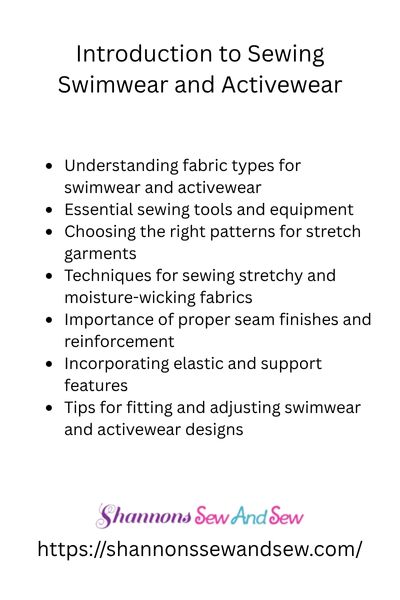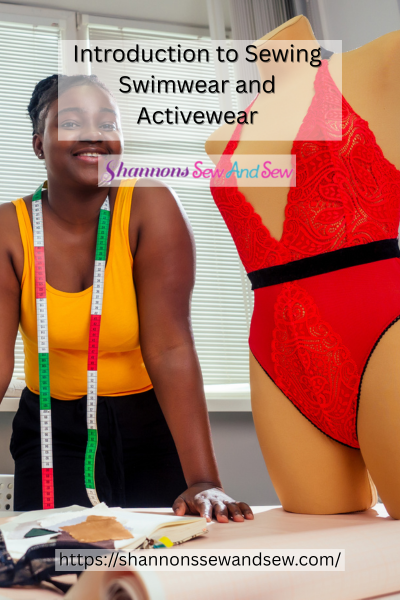Sewing Clothes
Introduction to Sewing Swimwear and Activewear
If you’ve ever looked at sleek swim trunks or moisture-wicking gym shorts and thought, “Could I make those myself?” — then welcome to the wild and wonderful world of sewing swimwear and activewear.
Read More About Introduction to Sewing Swimwear and Activewear

That Time I Tried Sewing My First Pair of Swim Shorts
Let me tell you, I was way too confident when I first tackled swimwear. I had this awesome printed spandex I couldn’t resist (flamingos on surfboards — I know, ridiculous and amazing). I thought, “How hard can this be?” Fast-forward two hours, my machine was eating the fabric, the elastic hated me, and my language wasn’t suitable for kids.
But here’s the kicker — once I figured it out? It was so satisfying. That one flamingo short mess turned into a full drawer of gym and swim gear I actually wanted to wear.
More Things to Know About Introduction to Sewing Swimwear and Activewear

Why Sewing Swimwear and Activewear Is Worth the Hype
Let’s be real — most store-bought activewear fits like it’s made for mannequins, not humans. And if you’ve got broader shoulders, thicker thighs, or just like a little more (or less!) coverage, you know the struggle.
Learning how to make your own pieces means you can finally get the fit, feel, and function you want. Plus, have you seen the price tags on name-brand activewear lately? Yikes.
When you dive into sewing swimwear and activewear, you’re not just saving money — you’re building skills, getting creative, and maybe even discovering your new favorite hobby. It’s empowering. And kinda addicting.
Let’s Talk Fabric — And Why It Matters
You can’t just grab any old cotton and call it a day. This stuff has to move with you, stretch in the right places, and bounce back like a champ. Look for nylon-spandex blends or polyester-spandex for that perfect combo of stretch, durability, and dry-fast magic.
Oh, and one lesson I learned the hard way: always check the stretch percentage before cutting anything. If your fabric doesn’t stretch enough, well… let’s just say your shorts might become a very tight hat.
Picking Patterns That Don’t Make You Cry
Here’s the good news — there are patterns out there designed specifically for sewing swimwear and activewear. And they’re way more user-friendly than they used to be. Look for patterns labeled “activewear” or “swim,” and start simple. Think basic trunks, biker shorts, or a fitted tee. Get those down, and then start adding bells and whistles like zippers, mesh panels, or built-in liners.
One tip? Don’t be afraid to size up or make a muslin (a test version) with cheaper fabric. You’ll thank yourself later.
Tools You Actually Need (And a Few You Don’t)
You don’t need a fancy $2,000 machine. I’ve used a basic sewing machine with a zigzag stitch for years. A serger is nice, but not required. What is required? A ballpoint needle (super important for stretchy knits), stretch thread if you can swing it, and a walking foot if your machine tends to eat fabric for breakfast.
Also: clear elastic. It’s the secret sauce to keeping leg openings and waistbands snug without being restrictive. I once made a pair of shorts without it — let’s just say they were more “floppy pajama” than “supportive activewear.”
The First Time Everything Feels Weird — But That’s Normal
Sewing swimwear and activewear isn’t hard, but it is different. The fabric stretches. The seams need to flex. And you’ll probably mess up your first waistband. Everyone does.
But that first run or swim in something you made? There’s nothing like it. I still remember jogging in my homemade compression shorts for the first time. I felt like a superhero. A very sweaty superhero, but still.
Customization Is the Best Part
Once you’ve got the basics down, get creative! Want a secret phone pocket in your gym shorts? Done. Prefer your swim trunks with a longer inseam and a cheeky print? You’re the boss. Hate that “ride-up” feeling in your compression shorts? You can fix that, too.
Sewing swimwear and activewear gives you complete control. And let’s be honest — it’s fun showing off your DIY skills at the beach or gym. Someone will ask where you got that piece, and you get to say, “I made it.”
Dive into the Fun of Sewing Activewear and Swim Projects
Starting your journey into sewing swimwear and activewear might feel intimidating, but you’re way more capable than you think. With the right fabric, a few simple tools, and a little patience (okay, maybe a lot at first), you’ll be surprised by what you can make.
Take it from someone who’s sewn everything from soggy disasters to gym gear that actually lasts — once you get the hang of it, this stuff is addictive. So go grab that stretchy fabric, pick a pattern that speaks to you, and give it a try.
Worst case? You learn something. Best case? You never buy gym shorts again. Win-win.




















